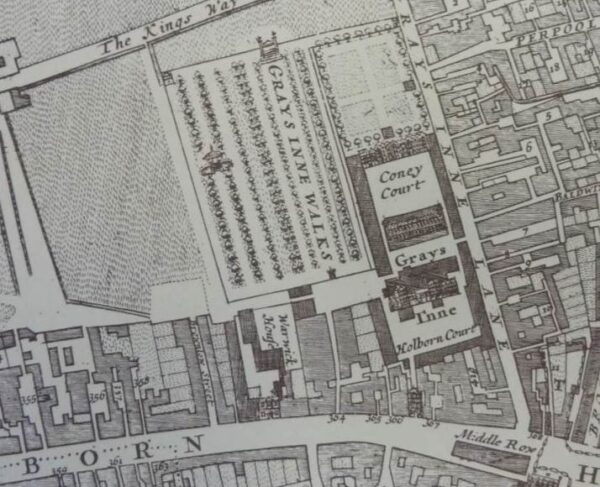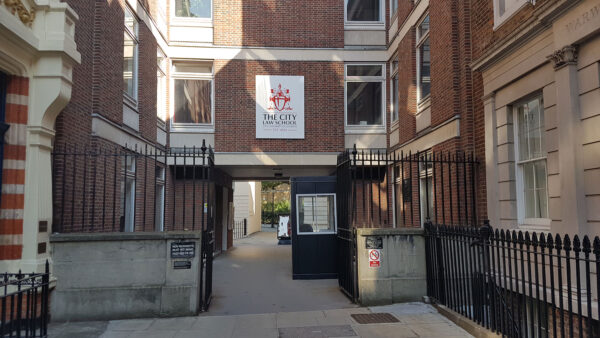This alley with a mix of modern and old buildings is a legacy of an impressive house and impressive bombing raids during WW2.
Warwick Court was built on the site of Warwick House, the house of the earls of Warwick, and may have been built by Robert Rich (1559–1619), who was enrolled at the nearby Gray’s Inn in 1578.
After passing through a number of members of the family, the history of the area is a bit difficult to be sure of, as there seems to have been several Warwick Houses in the area.
However, it’s generally thought that the house was demolished in the 1690s, as lease documents from 1694 show the garden area being rented for housing to be built on it. Warwick Court appears to have been built around the same time, based on the boundary stone on the second floor of 8 Warwick Court, which indicates that it was built in 1697.
A parish notebook of 1732 lists 24 properties in the alley.
Over the next couple of centuries, many of the houses were converted or rebuilt as offices. According to G Duckworth, walking around the area on 12 July 1898 to update Booth’s poverty survey, it had only one or two residents, the rest of its buildings being offices and shops.
That’s a trend which is now being reversed with modern rebuilds converting offices back into flats.
Warwick Court also suffered severe bomb damage during the Second World War. According to the bomb damage maps of the London County Council (LCC), the whole east side of Warwick Court was marked as ‘seriously damaged, doubtful if repairable’.
It’s that legacy that gives the alley its modern appearance, of a mix of very modern offices and grand old buildings. It was also around this time that the end of the alley was cut short, by the addition of the modern gatehouse leading to Gray’s Inn Place.
What’s particularly notable down here though is a plaque.
Sun Yat-sen was the founding father of the Republic of China, which existed from 1912 to 1949 when the Communists took over.
He was for a while in London, hence the plaque, and in echoes of modern day politics, was detained at the Chinese Legation in London, where the Chinese secret service planned to kill him. He was released after 12 days following publicity in The Times and pressure from the government.
The plaque is by Dora Gordine, and is situated on the site of Sun’s lodgings in London in 1896.










